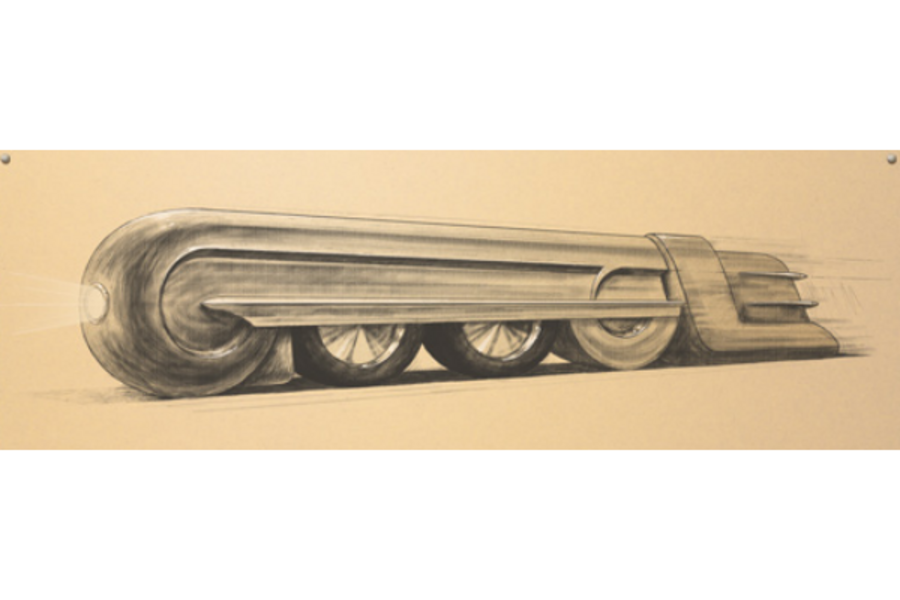Raymond Loewy's art deco designs streamlined the future
Loading...
Even in today's design-crazed era of Target and HGTV Design Star, it's unusual when industrial designers move out of the shadows and into the spotlight. As consumers, we're generally more interested in sleek products that work than in who created the curves and angles that define their look.
But nearly 100 years ago, French-born, American-based designer Raymond Loewy broke from the pack with a series of sleek, streamlined, chic, now "retro future"-looking vehicles, logos, and home appliances. The Greyhound bus, the iconic Coca-Cola bottle, and logos for Shell, Exxon, and Nabisco all rank prominently among his works. Time magazine featured him on its cover on Oct. 31, 1949, saying "He streamlines the sales curve."
Now, on what would have been his 120th birthday, the designer has really made the big time: he's featured in today's Google Doodle.
The doodle is based on Loewy's Pennsylvania Railroad S1 train, which even now looks like a breathtaking leap into a brighter, bolder future: This experimental vehicle was the longest and heaviest rigid frame reciprocating steam locomotive ever built according to The Avanti website, and its art deco styling was at once artful and suggestive of great modern power.
The Monitor wrote about the S1 in 2004, quoting Loewy himself:
'It flashed by like a steel thunderbolt, the ground shaking under me, in a blast of air that almost sucked me into its whirlwind.' [...These words] open Raymond Loewy's impassioned description of the S1 steam locomotive he designed in 1937. His words have the ring of the Italian Futurists' manifestos a quarter century earlier, extolling the irresistible thrust of modern machines, sweeping away the past.
Tellingly, this quote comes from a story not about Loewy's vehicle designs, but about an office pencil sharpener that he designed - the S1 anecdote traces the throughline of Loewy's love of optimistic, streamlined, powerful designs from the grand to the picayune, from America's open rails to the penned-in desktops of the office worker.
Loewy is in good company as a Google Doodle subject - other designers including Edith Head (costumes), Saul Bass (movie titles), and Frank Hornby (toy trains) have been featured in the series.








